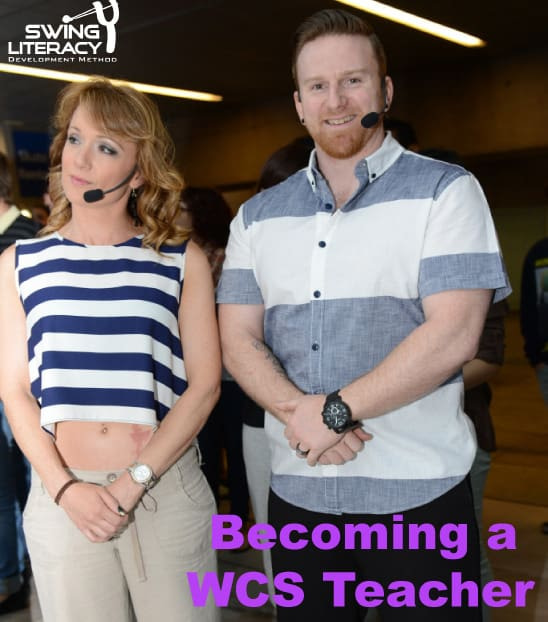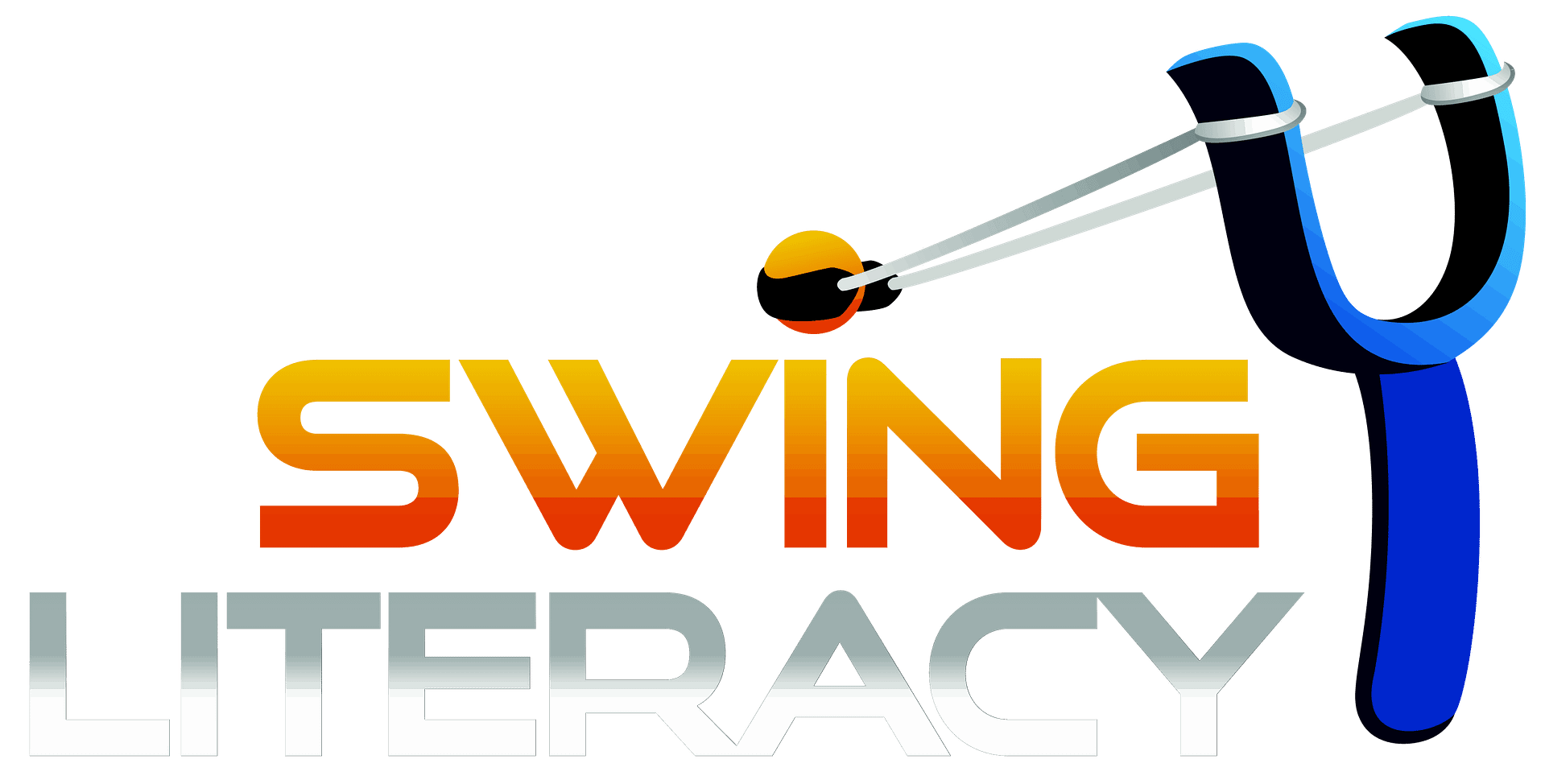No products in the cart.

Reading Time: minutes remaining
As creators of the Swing Literacy Development Method, we train teachers on a regular basis, and get asked all the time, “What do I need to do to start teaching?”. This question is quickly qualified with assuring statements like “I know I’m not advanced level yet, but there’s no one else in my town who can teach”, or “I don’t want to be one of ‘those dancers’ who take money for lessons but really have no business calling themselves a teacher.”
This is a fantastic approach, and I wish more of “those dancers” would take the time to ask a Pro for advice before starting to teach too. Everyone’s reasoning for wanting to become a teacher are different, and so is everyone’s path. So here are some guidelines.
Teaching is a learned technical skill. Any idiot can demonstrate something, but no matter how accurate that demonstration is or how good of dancer they are, this has no bearing on their skills as a teacher. While there are plenty of great teacher role models available, there are also plenty of ignorant/lazy/moneyhungry/selfcentred dance teachers out there. Are you going to be part of the problem or part of the solution? You have to develop your teaching skills just as you have developed (AND CONTINUE TO DEVELOP) your dancing skills. You are ambassadors for the dance and are taking on the responsibility of being a positive influence in people’s lives.
Get formal teacher training
If you have teaching training from other areas, fabulous – it will be easy to convert. If not, go out and get some training. Take a night school class on How to Teach Adults or even a weekend coaching course. Learn how to organize and prepare your materials, your information, your time management, etc. A few well-established Pros offer short workshops for teachers which focus mostly on the business and operations of teaching dance. We have put our decades of formal and informal training in teaching, coaching, and dance into creating the WCS world’ most comphrehensive Teacher Development Program called the Swing Literacy Development Method, which focuses more on the skill development pedagogy of WCS and takes up to one year to complete.
Get informal training: Mentorship
While there is no official ongoing mentorship program available, the mentoring relationship is as old as social dancing instruction itself. Usually this involves a student presenting themselves to a high level Pro, indicating their interest in studying under their tutelage. It might start as a student-coach relationship but as the student becomes more in demand as a dancer and performer, they will be requested to teach. At this point, the student needs guidance in making this transition. These can be tricky waters to navigate, and a mentor can help avoid repeating unnecessary mistakes. Mentorship should not be the only source of training, however. It is part of a balanced diet of education.
Start analyzing your own dancing
Think about how YOU learned to dance. Do those techniques still apply, or has the dance evolved since then? Have you learned better methods you wish you heard back then? Incorporate them into your repertoire. Are you sure that you currently perform and use the techniques that you plan on teaching? Better brush up on them so your students have a good role model. Oh and of course you’d better know all the details of all the basics for both the leader and the follower. This might be a good time to get your butt back into some private lessons to tune up and prepare for teaching. Take privates and ask the pro to also offer the teacher’s perspective on the tips they give you, or just take a few privates as a teacher in training.
Observe other teachers
Of all levels! Sit in on other teachers’ classes, audit pros’ workshops, even observe some non-WCS classes. There’s always something to be learned from even the bad classes – learn from others’ mistakes! Take group classes just to observe how the teacher treats their students, how they keep the flow of their class, how they explain concepts and respond to questions, how they use humour or stories to teach, and how they provide feedback. There are a few different formulae for workshops, and good teachers are not afraid to create their own if it works better. So don’t assume all classes are the same. Your methods will not be the only methods, so observe other teachers at work and take notes. Give credit where credit is due. Be open to different styles of the dance – one person’s theory is not universal, but still has value.
Gain street-cred
You could just set up shop and start taking money in exchange for dance advice. But only the naive will come to you unless you have built yourself a reputation as an authority. The dancers who know better won’t bother, because you have set no teaching precedent. Being a good dancer and having competitive success isn’t enough. The public needs to know you are capable of helping them, and care about helping them. Even if you have teaching experience in another dance style, no one will care if you haven’t demonstrated it in WCS. The best way to develop street cred and establish yourself as a local authority is to take leadership in your community. Here’s a great article on how to do that
Get feedback and pursue professional development
Don’t assume you are above the law! Teaching does not make you omniscient. Get a trusted set of eyes and ears to steer you in the right direction and help you work on your weaknesses (mistakes are okay – making them bad habits is not). You are still a student of the art and science of this dance. It is your job to distribute what you know to eager students, so keep learning and don’t let your well run dry. Continue to seek out more training opportunities, such as the SLDM. Stay current. Invite feedback from students and senior teachers.
What does it take to be a kick-ass teacher of WCS?
1. Sense of responsibility
- You are in a position to change people’s lives. There is a science to teaching a skill like dancing, and when teachers don’t train it, the result is dancers have less desireable results or end up quitting, which affects their lives.
- Responsibility to stay current in the dance as well as maintaining and upgrading their teaching methods.
- Responsibility for being an agent of WCS and passing on this cultural art form.
- Responsibility for contributing to a social dance culture.
2. Training:
- Can you survive on piecemeal teachers’ workshops and shadowing? Sure, but wouldn’t you rather thrive? Teachers’ workshops are just “snacks”. Like getting brand new furniture for your half-built house. And don’t think your dance training does not count as teacher training. Whether you are a new teacher or experienced teacher, you need a solid foundation of teaching skills, and for this you need a complete program.
3. Growth Mindset
- Belief that all students have potential to grow. There is no such thing as someone who can’t improve. Exhibiting and modeling this mindset in front of your students so they learn how to have a growth mindset too.
4. Empathy
- Being able to put yourself in your students’ shoes solves a myriad of issues. By anticipating how your students will feel or what your students need, you can make their learning experience more comfortable and make your classes more magnetic.
5. Performance
- Public speaking confidence and competence holds back many teachers who would otherwise be excellent. Part of teaching dancing is “selling” students on ways to move their bodies and “selling” students on engaging themselves in parties, workshops, events, etc.
Bonus Reading: Tessa’s experience
How I became a TEACHER:
I was a national level competitive swimmer all through childhood and high school. I began coaching swimming at 14, training groups as well as private lessons. At 16, I became certified to lifeguard and teach swimming lessons (this is an intensive process involving over 100 hours of classroom and practical training). I also took my coaching certification courses (also an intensive process of about 100 hours) and became certified to National Coaching Certification Program Level III. At age 16 I wrote and facilitated a coach training program that is still in use today by the provincial coaching association. My career goal at the time was to coach at the Olympics. I went to the University of British Columbia and acquired a Bachelors degree in Human Kinetics (Kinesiology), which is the study of Human Movement. My classes consisted of biomechanics, physics, anatomy, skill acquisition, motor development, ergonomics, physical training, leadership, group teaching, team teaching, motivation, organizational behavior, lesson and season planning, and injury management. I coached full-time after graduating, then went back to school to obtain my Bachelor of Education (also known as teacher credentials). My classes consisted of child and adult psychology, skill development, lesson and unit planning, classroom management, working with parents, accommodating different learning styles, teaching adult learners, guided instruction, educational philosophy, and of course all the subject areas. My teaching degree was universal: it prepares teaching professionals to teach anything to anyone.
How I became a WCS TEACHER:
I started ballroom dancing because my dad recently divorced and took up Arthur Murray lessons in order to get a social life and confidence. I would go to the dance parties just to hang out with him, but I never took a lesson. I would just keep my frame and truly follow. I learned how to follow before I learned how to dance. I was so lucky. After finishing my B.H.K., I was looking for a hobby to fill my extra time, so I answered an ad in the paper that said “Dance Instructor wanted – no experience necessary, will train.” I auditioned and was trained to teach all the social dances at the beginner level for teach classes in community centres (guffaw!). My instructor didn’t understand WCS very well so he taught it to us last, saying it was “the hardest dance”. I thought it was a stupid dance – awkward timing changes and erect posture and slow moves – I thought it was for “old fogies” who were to slow to do jive and not cool enough to do hustle! Then he convinced my to go to Seattle Easter Swing where I saw Jordan and Tatiana’s “Im Outta Love” routine and of course, I was floored and hooked. I dropped everything and focused on WCS. But I was a student again: I didn’t understand it enough to teach it. So I started going to more events and taking privates from national Pros and helping out in classes at home. Because there didn’t appear to be a consistent body of knowledge, most of my time was spent interpreting and analyzing what the teachers taught into my Kines/Skill Development/Coaching language. Then when I partnered with Myles, I slowly started dancing and teaching more with and without him.
Just as a side note, that is my story about how I became a WCS teacher. But teaching is a very different skill than dancing, so the two should not be collapsed.
Like this article? Want to translate it into another language? Send it to us in a private message and we’ll post it here!
You must be logged in to post a comment.

Loved reading about your history Tessa. You’re a very disciplined, driven person with a fantastic personality to boot. Looking forward to getting educated.
HUGS!
Laura Olsen